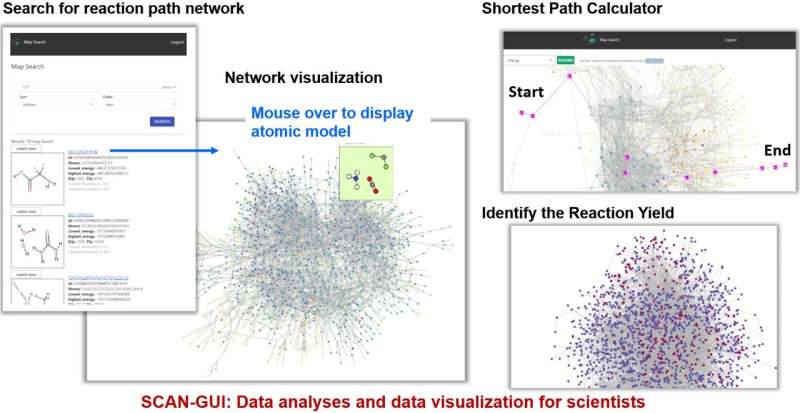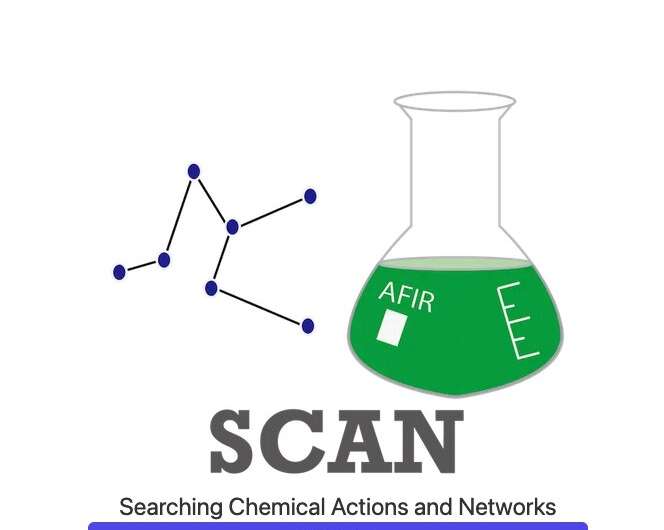This article has been reviewed according to Science X's editorial process and policies. Editors have highlighted the following attributes while ensuring the content's credibility:
fact-checked
trusted source
proofread
A user-friendly platform for virtual exploration of chemical reactions

A new online platform to explore computationally calculated chemical reaction pathways has been released, allowing for in-depth understanding and design of chemical reactions.
Advances in computational chemistry have lead to the discovery of new reaction pathways for the synthesis of high-value compounds. Computational chemistry generates much data, and the process of organizing and visualizing this data is vital to be able to utilize it for future research.
A team of researchers from Hokkaido University, led by Professor Keisuke Takahashi at the Faculty of Chemistry and Professor Satoshi Maeda at the Institute for Chemical Reaction Design and Discovery (WPI-ICReDD), have developed a centralized, interactive, and user-friendly platform, Searching Chemical Action and Network (SCAN), to explore reaction pathways generated by computational chemistry. Their research was published in the journal Digital Discovery.
"From a computational viewpoint, chemical reactions can be considered as extremely complex networks that consist of numerous molecular interactions," explains Takahashi. "Many tools have been developed to calculate these networks, such as the AFIR method we use at WPI-ICReDD. However, tools to explore these calculated networks are also needed, which led us to the current study."

Broadly, all the raw data from AFIR calculations form a "data lake." This data is then subjected to a pre-processing step, creating a "data warehouse." Finally, the "data mart" accesses and retrieves data from the data warehouse and provides tools to visualize, analyze, and share the retrieved data.
"The pre-processing step is crucial," Maeda elaborates. "The raw data form AFIR contains an immense amount of information, from which the key data required for the SCAN platform must be extracted. This key data is sufficient to allow the creation of an interactive reaction pathway map which can be searched and viewed."
SCAN is accessible on the internet at https://scan.sci.hokudai.ac.jp/. The source code for SCAN is also publicly available.
"We have developed SCAN with a user-friendly graphic user interface," concludes Takahashi. "Users can search and explore the chemical reaction path network generated by the first principle calculation (AFIR). It will aid in achieving a detailed understanding of complex chemical reaction pathways."
More information: Searching Chemical Action and Network (SCAN): Interactive Chemical Reaction Path Network Platform, Digital Discovery (2023). DOI: 10.1039/D3DD00026E
Provided by Hokkaido University





















